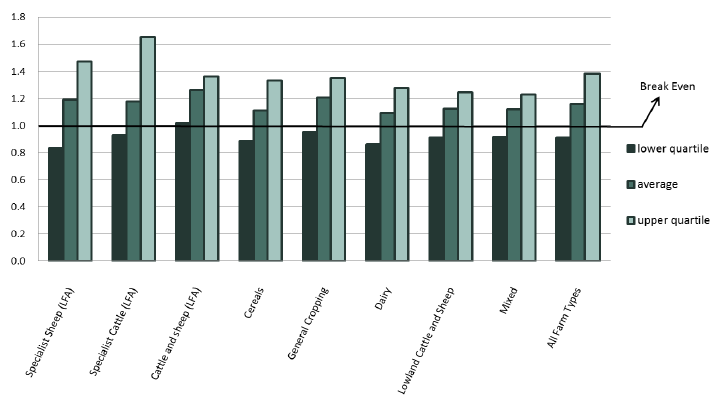Scottish farm business income: annual estimates 2016-2017
This publication provides estimates of average farm business incomes for the accounting year 2016-17, which relates to the 2016 crop year. For the most recent data, visit the Scottish farm business income (FBI) collection page below.
4. Productivity (Output/ Input Ratio)
(Table 2)
The output to input ratio can be viewed as a measure of productivity, that is, how much output can be produced per unit of input. Figure 9 shows the differences in the relationship between outputs and inputs which contribute to the differences in FBI. The overall average output to input ratio in 2016-17 was 1.16, meaning that for every £1 spent on inputs, Scottish farm businesses were generating £1.16 worth of outputs. The average for farms in the upper quartile (relatively high performers) was around £1.38, while for those in the lower quartile (relatively low performers) it was around £0.91; an average loss of £0.09 for every £1 spent.
Figure 9: Average output:input ratio by farm type and quartile (lowest 25 per cent, average and upper 25 per cent) for 2016-17

It should be noted, however, that a higher output to input ratio does not necessarily lead to a higher FBI when comparing across farm types. FBI depends on both the ratio between and the absolute levels of outputs and inputs. For example, the upper quartile output:input ratio of specialist cattle (LFA) farms, £1.65, was the highest of all farm types but the FBI upper quartile of specialist cattle (LFA) farms, £101,000, was only the third highest of all farm types. This was due to the relatively low absolute value of outputs and inputs compared to the other farm types.
Contact
There is a problem
Thanks for your feedback